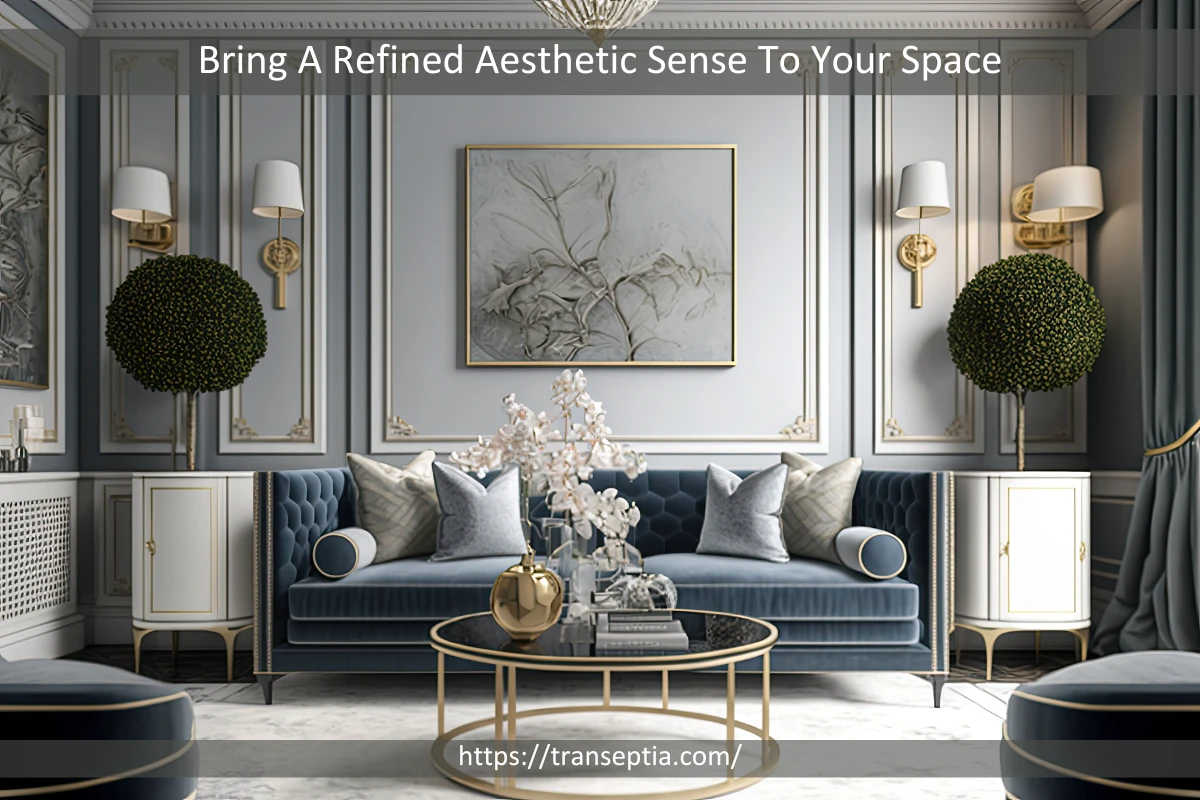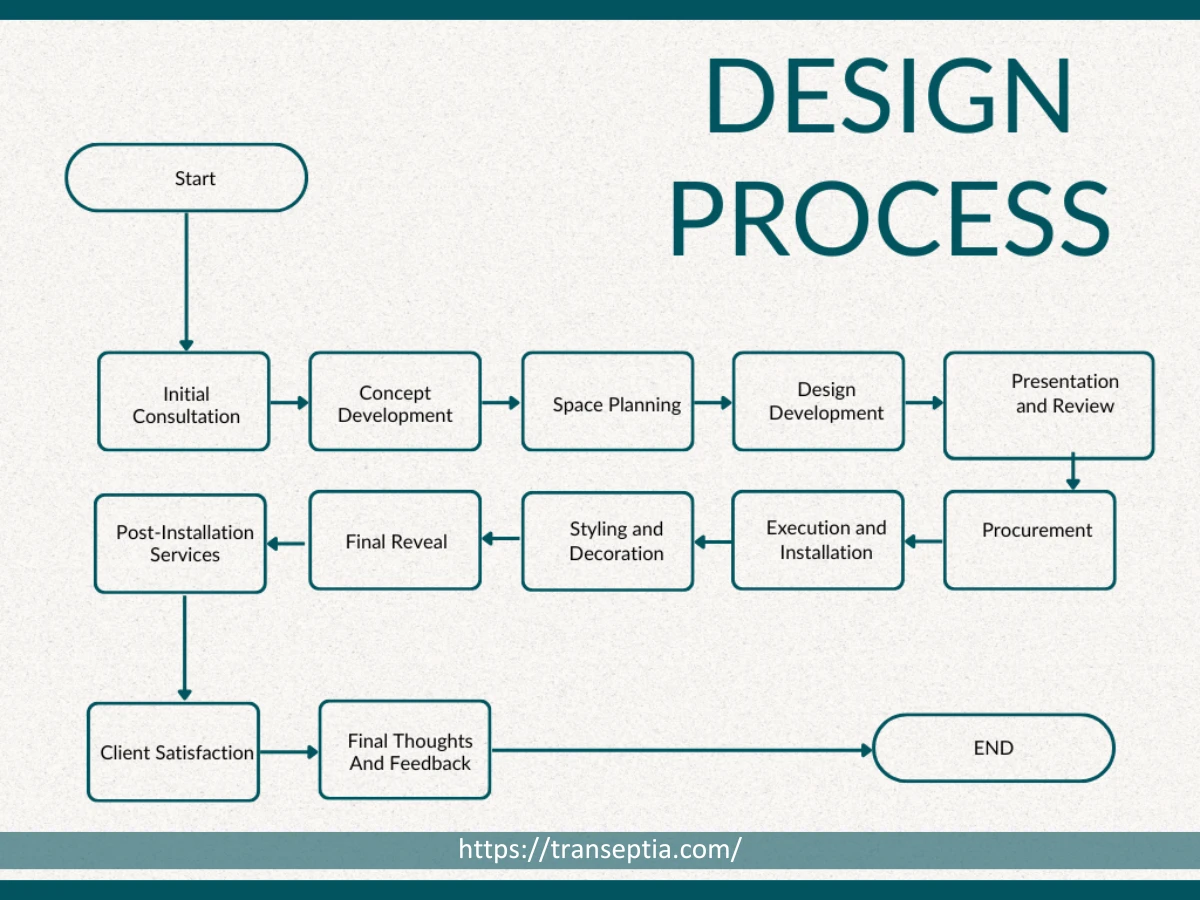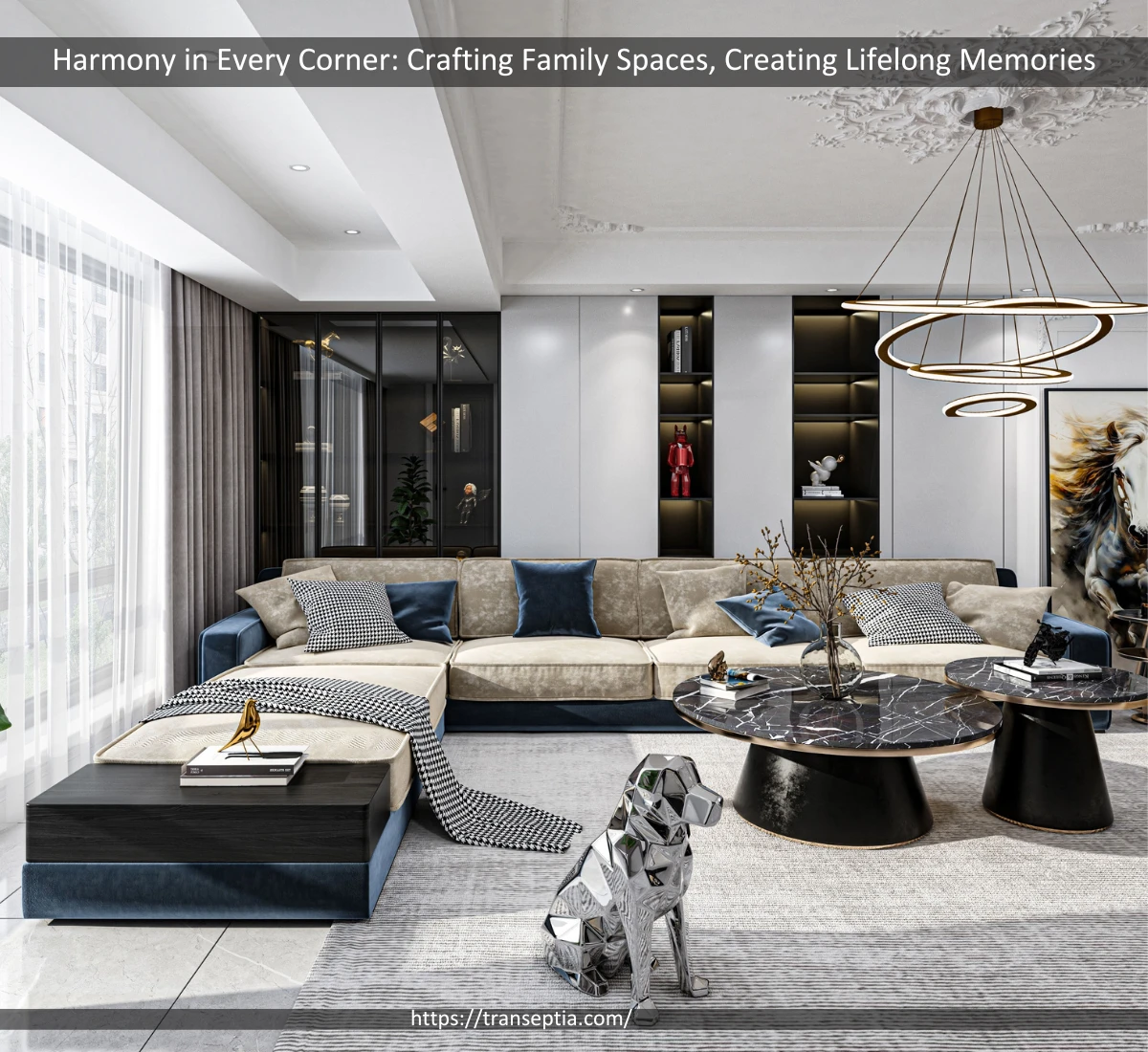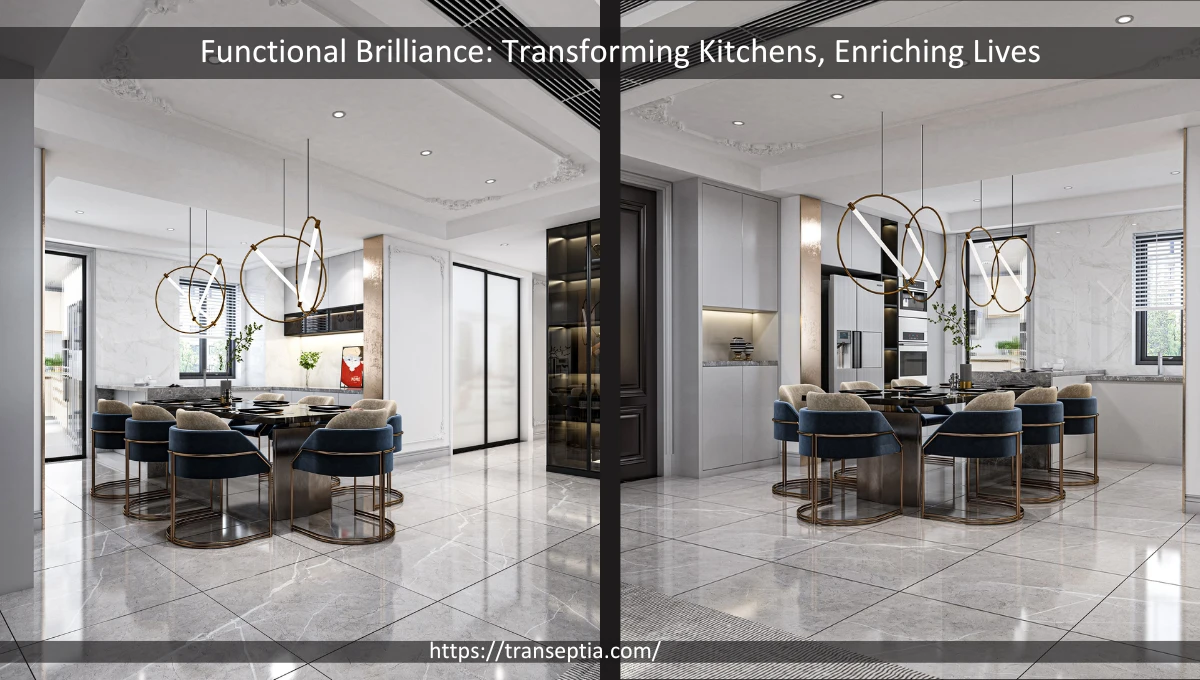Transform Your Space: The Power of Professional Interior Design Services
Your home is more than just a place to sleep; it's a reflection of your personality and style. It's where you relax, create memories, and find solace. Therefore, it's no surprise that many homeowners seek to create a space that truly feels like their own. While some people may have a natural flair for interior design, others may need a helping hand to turn their vision into reality. This is where professional interior design services come into play.
Benefits of Professional Interior Design Services
Certainly! Professional interior design services offer a wide range of benefits that can significantly enhance the aesthetics, functionality, and overall feel of your living or working space. Here, we'll delve into the various advantages of hiring a professional interior designer:

- Expertise and Vision: Interior designers are trained professionals with a deep understanding of design principles, color theory, spatial arrangements, and architectural elements. They possess the knowledge and experience needed to transform a space effectively. With their trained eye, they can see possibilities and potential that you might miss. They bring a fresh perspective to your project and can provide creative solutions to design challenges.
- Customization: One of the most significant advantages of hiring a professional interior designer is the level of customization they offer. They work closely with you to understand your lifestyle, preferences, and specific needs. This personalized approach ensures that the design not only reflects your personality but also functions seamlessly with your daily life. They can tailor the design to fit your unique requirements, making your space truly one-of-a-kind.
- Access to Resources: Interior designers have access to a vast network of suppliers, manufacturers, and artisans. This network allows them to source unique materials, furniture, and decor items that may not be readily available to the general public. They can find the perfect pieces that align with your vision and budget, ensuring that your space stands out.
- Time and Stress Savings: Undertaking an interior design project, especially a major one, can be a time-consuming and stressful endeavor. Designers handle all the details, from conceptualization to execution, which can save you a significant amount of time and reduce stress. They coordinate with contractors, manage deliveries, and oversee the project, allowing you to relax and enjoy the transformation process.
- Budget Management: Professional interior designers are skilled in budget management. They can help you allocate your budget effectively, making sure that every dollar is spent wisely. They can also provide cost-effective alternatives without compromising on the quality and aesthetics of the design.
- Efficient Problem Solving: During a project, unexpected challenges can arise. Interior designers are equipped to handle these challenges efficiently. They can adapt to changing circumstances and find solutions that maintain the integrity of the design and keep the project on track.
- Comprehensive Design: Interior designers take a holistic approach to design. They consider every aspect of the space, including lighting, color schemes, furniture arrangement, and the selection of materials. This ensures that the design is cohesive and harmonious, creating a visually pleasing and functional environment.
- Increased Property Value: Professional interior design services can significantly increase the value of your property. A well-designed space is more appealing to potential buyers or renters, making your property more marketable and potentially commanding a higher price. It can be a wise investment in the long run.
- Latest Trends and Innovations: Interior designers stay updated with the latest design trends, innovations, and technologies. They can introduce you to new ideas and concepts that align with your style and preferences, helping you create a space that feels fresh and contemporary.
- Project Management: Interior designers serve as project managers, overseeing all aspects of the project. They ensure that timelines are met, contractors are coordinated, and the design vision is executed to perfection. This level of project management expertise is invaluable for a successful interior design project.
Professional interior design services offer numerous benefits, ranging from expert guidance and customization to time savings and increased property value. If you want to transform your space into a beautifully designed and functional environment that reflects your personality and lifestyle, working with a professional interior designer is a wise investment. Their expertise and vision can turn your design dreams into reality.
The Design Process
The interior design process is a structured series of steps that professional interior designers follow to transform a space into a well-planned, functional, and aesthetically pleasing environment. Here's a detailed overview of the typical interior design process:

- Initial Consultation
- Client Meeting: The process begins with an initial meeting between the client and the interior designer. During this meeting, the designer aims to understand the client's goals, preferences, lifestyle, and budget. It's essential to establish clear communication and build a rapport between the client and designer.
- Site Assessment: The designer visits the space to assess its current condition, taking measurements, photographs, and notes. This assessment helps the designer understand the physical constraints and possibilities of the space.
- Concept Development
- Design Brief:Based on the initial consultation and site assessment, the designer creates a design brief. This document outlines the project's scope, objectives, and any specific requirements.
- Research and Inspiration:Designers conduct research to gather inspiration and ideas that align with the client's vision. They may create mood boards, collect color samples, and explore various design concepts.
- Space Planning
- Functional Layout:The designer develops a functional layout plan that optimizes the use of space. This includes determining the placement of furniture, fixtures, and other elements to ensure efficient flow and functionality.
- Traffic Flow:Attention is given to how people will move through the space, ensuring that there are no obstructions or awkward pathways.
- Furniture Selection:Based on the layout, the designer selects furniture pieces that fit the space and complement the overall design concept.
- Design Development
- Color and Material Selection:he designer selects appropriate colors, materials, and finishes for walls, floors, ceilings, and other surfaces. This includes choosing paint colors, flooring materials, countertops, and more.
- Custom Elements:If the project requires custom furnishings or built-in features, the designer works with artisans and craftsmen to design and create these unique pieces.
- Lighting Design:The designer plans the lighting scheme, incorporating various types of lighting fixtures to create ambiance and functionality. This includes task lighting, ambient lighting, and accent lighting.
- Presentation and Review
- Design Proposal:The designer presents the design proposal to the client, which includes visual representations such as 3D renderings, floor plans, material samples, and a detailed project budget.
- Client Feedback:The client provides feedback and can request revisions to the design proposal. This phase may involve several rounds of discussions and adjustments until the design aligns with the client's vision.
- Procurement
- Ordering and Purchasing:Once the design is approved, the designer orders and purchases all the necessary materials, furniture, fixtures, and decor items. They coordinate with suppliers and ensure that deliveries are scheduled as per the project timeline.
- The client provides feedback and can request revisions to the design proposal. This phase may involve several rounds of discussions and adjustments until the design aligns with the client's vision.
- Execution and Installation
- Project Management:The interior designer acts as a project manager, overseeing the entire installation process. This includes coordinating contractors, craftsmen, and artisans to ensure that the design is executed as planned.
- Quality Control:The designer inspects all aspects of the installation to ensure that it meets the quality standards and design specifications. Any issues or discrepancies are addressed promptly.
- Styling and Decoration
- Furnishing and Decor:The designer arranges and styles the space with furniture, decor items, and accessories to bring the design to life.
- Final Touches:Details such as artwork placement, textiles, and decorative elements are added to enhance the overall aesthetics of the space.
- Final Reveal and Client Walkthrough
- The designer conducts a final walkthrough with the client, showcasing the completed project. This is an opportunity for the client to see the design in its entirety and provide any final feedback.
- Final Touches:Details such as artwork placement, textiles, and decorative elements are added to enhance the overall aesthetics of the space.
- Post-Installation Services
- Interior designers may offer post-installation services, including maintenance recommendations, to ensure that the design continues to look and function its best over time.
- Maintenance Guidelines:Interior designers may provide clients with guidelines on how to maintain and care for the newly designed space. This includes recommendations for cleaning, upkeep, and handling different materials and finishes.
- Warranty and Follow-Up:Some designers offer warranties on their work and products used in the project. They may also schedule follow-up visits to address any issues that may arise after the project's completion.
- Client Satisfaction
- Client Feedback:After the project is completed and the client has had time to experience the space, designers often seek feedback to ensure that the design meets or exceeds expectations. This feedback helps designers continually improve their services.
- Final Thoughts on the Interior Design Process
The interior design process is a dynamic journey that transforms empty spaces into functional, aesthetically pleasing environments that resonate with the clients' personalities and needs. It is a collaborative effort that requires effective communication, creativity, and attention to detail.
The interior design process is a collaborative effort between the designer and the client, with each phase carefully planned and executed to create a space that reflects the client's personality, meets their needs, and aligns with their vision. The result is a beautifully designed environment that enhances the quality of life for those who inhabit it.
Professional interior designers bring a unique blend of expertise, creativity, and problem-solving skills to the table. They turn design concepts into reality, working diligently to harmonize form and function. The result is a space that not only looks beautiful but also enhances the quality of life for those who inhabit it.
Through careful planning, meticulous attention to detail, and a commitment to creating spaces that are both functional and visually stunning, interior designers play a crucial role in shaping the world around us. Whether it's designing a home, an office, a restaurant, or a retail space, their work has a profound impact on the way we live, work, and experience our surroundings. In conclusion, the interior design process is a comprehensive journey that begins with a vision and ends with the transformation of a space into a unique and well-designed environment. It's a process that adds value, comfort, and beauty to our lives, making our spaces more than just physical structures but true reflections of our identities and aspirations. So, whether you're embarking on a home renovation or designing a commercial space, consider partnering with a professional interior designer to bring your design dreams to life.
Case Study 1: The Cozy Family Home
Certainly, let's dive into Case Study 1: The Cozy Family Home to explore how professional interior design services transformed a family's living space:

Client Background:
- The clients were a family of four, including parents and two young children.
- They owned a spacious yet outdated living room that lacked warmth and functionality.
- Their goal was to transform the space into a cozy and inviting area where they could relax, entertain guests, and spend quality time together as a family.
Initial Challenges
- The existing living room had an outdated color scheme, with faded wallpaper and worn-out carpeting.
- The furniture was mismatched, and there was limited storage, making the room feel cluttered.
- The layout didn't optimize the available space, resulting in wasted areas and poor traffic flow.
Design Vision
- The interior designer collaborated closely with the clients to understand their vision for the space.
- The goal was to create a cozy and functional family room with a warm and inviting atmosphere.
- The design concept aimed to incorporate a harmonious color palette, comfortable yet stylish furniture, and ample storage solutions.
Design Solutions
Color and Material Selection:
- The designer chose a warm color palette consisting of soft earth tones like beige and warm gray, complemented by accents of muted blues and greens. These colors conveyed a sense of coziness and tranquility.
- To replace the outdated wallpaper, the designer opted for a textured, paintable wallpaper that added depth and visual interest to the walls.
- Durable and easy-to-clean flooring options, such as hardwood and an area rug with a subtle pattern, were selected to replace the worn carpeting.
Furniture and Layout
- The designer created a new furniture layout that maximized seating and enhanced traffic flow. Plush sofas and chairs were strategically placed to create conversational groupings while ensuring easy movement throughout the room.
- Custom-built shelving units were designed to provide ample storage and display space. These shelves not only added functionality but also became a focal point of the room.
- Coordinated furniture pieces, including a coffee table, end tables, and a media console, were chosen to match the overall design concept.
Lighting Design
- A layered lighting scheme was implemented to create ambiance and flexibility. This included a combination of recessed ceiling lights, table lamps, and wall sconces.
- Dimmer switches were installed to allow the family to adjust the lighting to their desired mood.
Textiles and Accessories
Final Outcome
- The transformation of the living room was remarkable. The once dated and uninspiring space had become a cozy and inviting family room that the clients absolutely loved.
- The warm color palette, comfortable seating arrangements, and ample storage solutions made the room functional for both everyday family life and entertaining guests.
- The custom-built shelving units provided not only storage but also opportunities for showcasing cherished family mementos and decorative items.
- The room's new lighting scheme created a warm and welcoming ambiance that could be adjusted to suit various occasions.
Client Feedback
- The clients were delighted with the final result, expressing how the transformed space had become the heart of their home.
- They appreciated the attention to detail, the personalized design, and the enhanced functionality of their living room.
- The family now enjoyed spending more quality time together in their cozy family room, creating lasting memories in a space that truly reflected their style and needs.
This case study exemplifies how professional interior design services can take a dated, inefficient space and turn it into a functional, aesthetically pleasing, and inviting environment that meets the specific needs and preferences of the clients.
Case Study 2: The Modern Kitchen Makeover
A couple with a passion for cooking wanted to update their kitchen. The interior designer suggested an open-concept layout, sleek cabinetry, and modern appliances. The result? A kitchen that not only looks stunning but also functions efficiently, making meal prep a joy.

Cost Considerations
One common misconception about professional interior design services is that they are prohibitively expensive. While there is an upfront cost, the investment often pays off in the long run. Interior designers can help you avoid costly mistakes, make the most of your budget, and increase the value of your home.
Interior Design Trends
Certainly! Interior design trends are constantly evolving, influenced by cultural shifts, technological advancements, and the changing tastes of homeowners. Staying up-to-date with these trends can help you keep your living spaces fresh and on-trend. Here are some of the interior design trends that have been prominent in recent years:
1. Sustainable Design
- As environmental concerns grow, sustainable design has gained significant traction. Homeowners are increasingly seeking eco-friendly materials and practices in their interiors.
- Sustainable design includes using recycled and repurposed materials, energy-efficient fixtures, and natural and organic elements like reclaimed wood and bamboo.
2. Biophilic Design
- Biophilic design aims to bring the outdoors inside. It emphasizes the use of natural materials, abundant indoor plants, and large windows that provide plenty of natural light and views of nature.
- This trend not only enhances the aesthetics but also promotes well-being by connecting occupants with nature.
3. Minimalism and Decluttering
- Minimalism continues to be a popular interior design trend, characterized by clean lines, neutral color palettes, and a focus on functionality.
- Decluttering and organization are key components of minimalism, with homeowners seeking storage solutions that keep their spaces tidy and uncluttered.
4. Vintage and Retro Styles
- Vintage and retro elements are making a comeback, with mid-century modern and art deco designs being particularly popular.
- Vintage-inspired furniture, bold geometric patterns, and nostalgic color schemes are being integrated into modern interiors.
5. Bold Colors and Patterns
- While neutral colors remain a staple, there's a growing trend towards incorporating bold and vibrant colors and patterns into interior design.
- This includes rich jewel tones, contrasting color combinations, and the use of patterned wallpapers and textiles to add drama and personality to spaces.
6. Mixed Materials
- Mixing different materials, such as metal, wood, glass, and stone, is a prevalent trend. It adds depth and texture to interiors.
- Combining contrasting materials like concrete and warm wood or glossy finishes with matte surfaces creates visual interest.
7. Smart Home Integration
- With the rise of smart home technology, interior design is increasingly incorporating integrated and concealed tech solutions.
- This includes voice-controlled lighting, automated blinds, and smart appliances seamlessly blending into the design.
8. Texture and Touch
- Texture-rich interiors are gaining popularity, with a focus on tactile experiences. This includes textured wallpapers, fabric wall panels, and materials like velvet, bouclé, and shaggy rugs.
- Incorporating different textures adds depth and dimension to a room.
9. Open and Flexible Spaces
- Open-concept living spaces that blend the kitchen, dining, and living areas continue to be in demand. These layouts promote a sense of connectivity and inclusivity.
- Additionally, flexible furniture and modular design elements allow spaces to adapt to various needs.
10. Individualism and Personalization
- Homeowners are seeking ways to express their individuality through interior design. Customization and personalization are key.
- Whether it's custom-built furniture, bespoke art pieces, or unique decor items, the trend is to create spaces that reflect the homeowner's personality.
11. Artistic Expression
- Art is becoming a focal point in interior design. Large-scale artworks, gallery walls, and sculptural installations are being used to add a sense of creativity and personality to spaces.
- The choice of art often influences the color palette and overall design direction.
These interior design trends offer a range of options for homeowners to explore and integrate into their spaces. While it's essential to consider your personal preferences and lifestyle when adopting these trends, they can provide inspiration and guidance for creating a fresh and contemporary interior.
DIY vs. Professional Design
While some homeowners may be tempted to take the DIY route, there are certain projects where professional guidance is invaluable. Consider your project's complexity, your skill level, and the desired outcome before deciding whether to DIY or hire a professional.
Finding the Right Interior Designer
If you're convinced of the benefits of professional interior design services, the next step is to find the right designer for your project. Consider factors such as their portfolio, style compatibility, and reviews from previous clients. A good fit between you and your designer is essential for a successful collaboration.
In conclusion, the power of professional interior design services is undeniable. They can transform your space into a reflection of your personality and style while optimizing functionality. If you're looking to create a home that truly feels like your own, consider partnering with an interior designer. The investment is not just in your living space; it's an investment in your quality of life.
